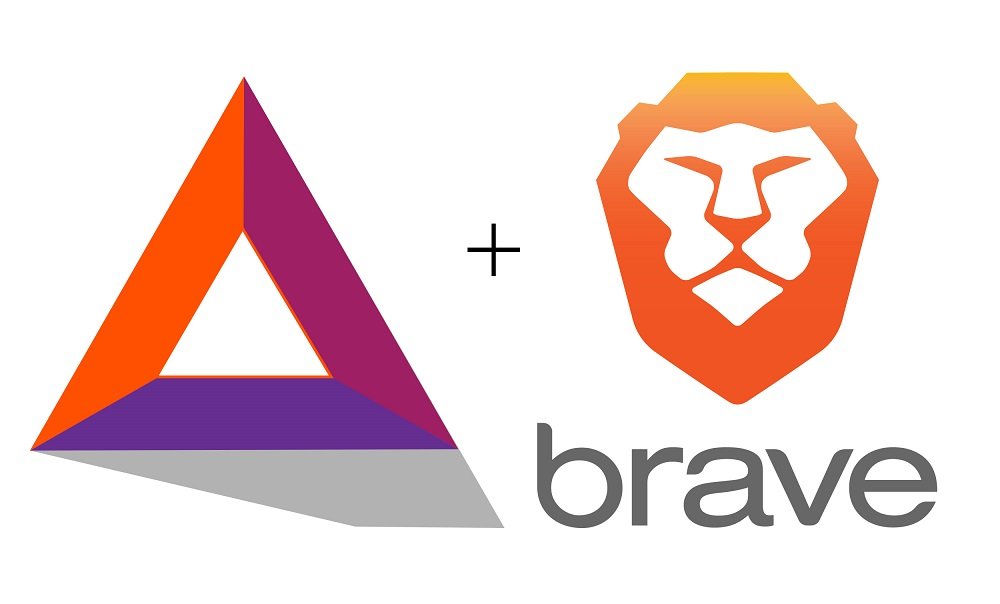Even to this day, very few crytpoasset related projects have working products out there utilized on a mass scale. Basic Attention Token (BAT) & the Brave Browser is one of them. Personally I have been using the Brave Browser since September of 2017 and I love it. It’s fast, smooth, and there are no ads! “Wait, what? No ads?” Yup, you heard that right. That’s where BAT comes in.
On April 18th, Brave announced a partnership with Dow Jones, the publisher of The Wall Street Journal and Barron’s. This a big step in the right direction for the ad-blocking Brave browser that two years ago had The New York Times, Washington Post, and Wall Street Journal (Dow Jones) calling Brave’s ad blocking “illegal.”
Dow Jones is offering a limited number of people who download Brave two years of free access to its Barron.com website or to a premium Market Watch newsletter.
“As global digital publishers, we believe it is important to continually explore new and emerging technologies that can be used to build quality customer experiences,” said Daniel Bernard in a statement, a senior vice president at Barron’s.
This move coming from the public’s growing disdain with advertisers and third party businesses handling our personal information. It has led to the rise in ad blockers (over 600 million employed now) and over 2 million monthly users for the Brave browser on Mobile, desktop, or laptop.
The Basic Attention Token initial coin offering (ICO) took place this past summer and managed to raise nearly $36 million worth of Ether in 30 seconds. Obviously this caused some controversy, as unless you were ready to go or had a bot to enter the token sale, you missed out on the token sale. This token sale was one of the reasons many later ICOs chose to hard cap what each individual could contribute to a token sale.
What is Brave & BAT?
BAT runs on top of the Ethereum network, utilizing the ERC20 token. For those who don’t know ERC is an acronym for Ethereum Request for Comment. Using BAT, users will be able to pay content creators for content they produce and receive BAT for watching ads.
Advertising, throughout history, has been used as the primary mechanism to capture Attention, raise it to a level of Interest to incite some Desire that can then translate
it into Action; otherwise known as AIDA.
“Attention has been widely recognized as a commodity, like wheat, pork bellies or crude oil. Existing industries have long depended on it to drive sales. And the new industries of the twentieth century turned it into a form of currency they could mint. Beginning with radio, each new medium would attain its commercial viability through the resale of what attention it could capture in exchange for its ‘free’ content.” -Tim Wu, Attention Brokers
Here are simple defintions/explanations of the two from the BAT White Paper:
- Brave is an open source, fast, privacy-focused browser that blocks third party ads and trackers, whilst implementing a ledger system that measures user attention to reward publishers accordingly.
- Basic Attention Token is a token for decentralized ad exchange that compensates the browser user for attention while protecting privacy. BAT connects advertisers, publishers, and users and is denominated by relevant user attention, while removing the social and economic costs associated with existing ad networks (e.g. fraud, privacy violations, and malvertising.)
- Malvertisements are fake ads that trick users into clicking on them and then downloading malicious code, including ransomware.
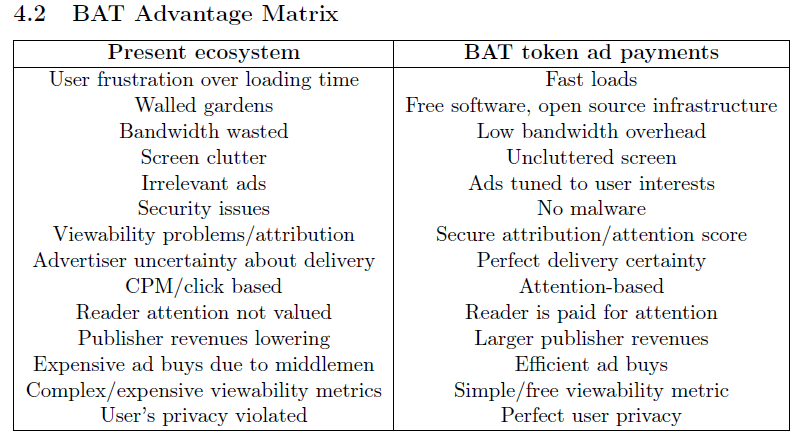
In the ecosystem, advertisers will give publishers BATs based on measured attention of users. Users will also receive some BATs for participating. They can donate them back to publishers or use them on the platform. This transparent system keeps user data private while delivering fewer, but more relevant ads, keeping clutter off the users screen.
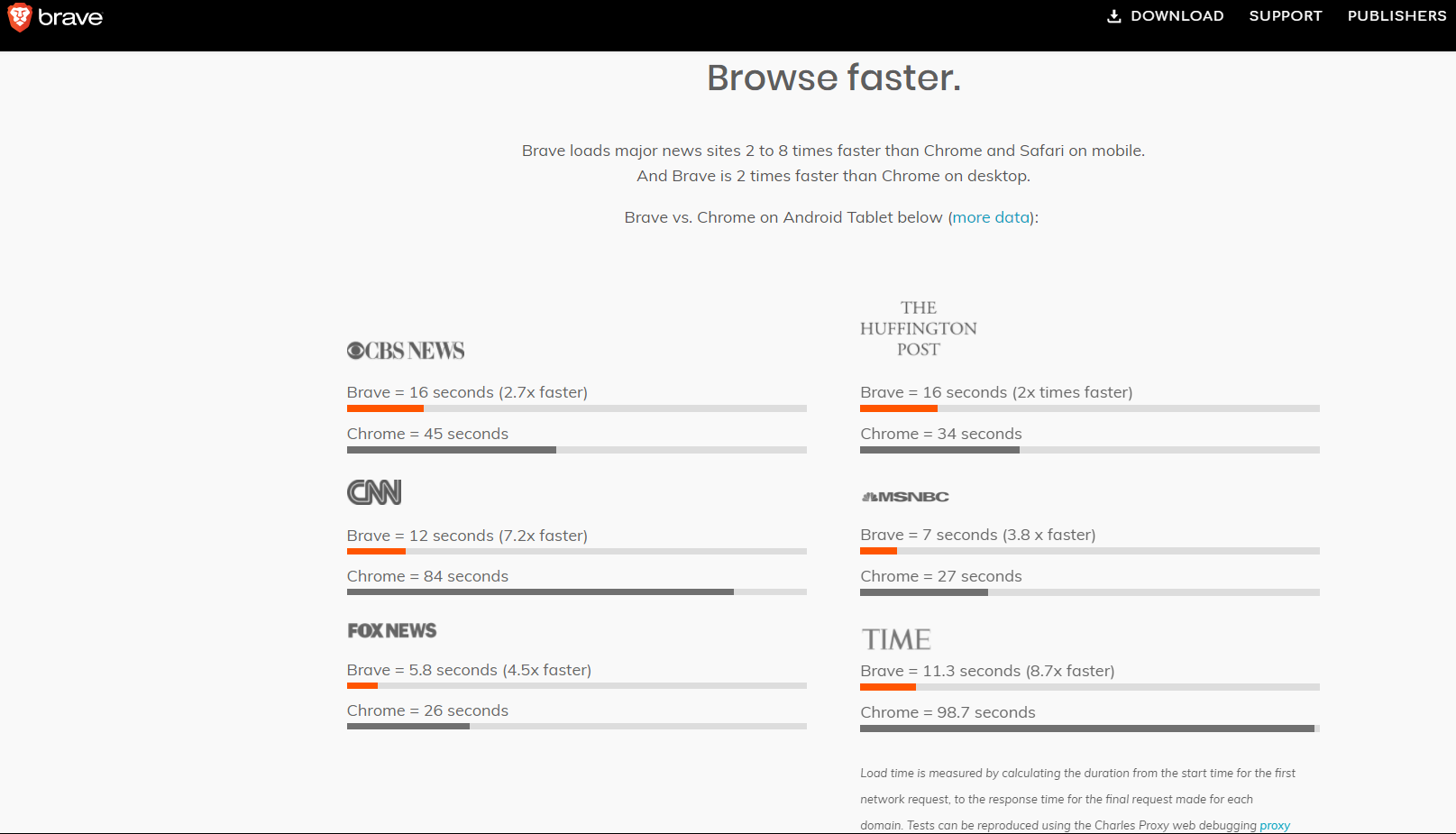
The numbers speak for themselves. I personally did a rudimentary test where I had “CNN.com” typed into both Brave and Google Chrome at the same time on the same laptop. I launched the Chrome one first, then proceeded to launch the Brave one. The Brave page loaded first by a wide margin
The reason that these two our so important is because digital advertising is broke. Think about when you open Facebook or hop onto Business Insider or Forbes. Think about the type of advertisements you get. Many are click bait titles and are scam related. Mobile advertising itself can cost users up to $23/month in data charges on the average user’s data plan, slow page loads, and can cause your mobile device to lose up to 21% of it’s battery life. To counter all this digital hoopla, over 600 million mobile and desktop devices employ ad blocking software and this number is constantly growing. This has led to traditional publishers losing around 66% of their revenue, adjusted for inflation over the past decade.
Privacy
As stated in the BAT white paper, digital advertising is full of a bunch of “middle-men” and is full of segmentation. These middle men chew away at publishers revenue and since many of them involve data transfers, it adds latency on to the end user, causing them to lose time. BAT and Brave Browser attempt to reign that in by offering a more user and advertiser friendly platform.
Privacy is something many people lost without ever knowing they had it. According to Pew Research, “Fully 91% of adults agree or strongly agree that users have lost control of how personal information is collected and used by companies.” On popular media sites, there can be upwards of 70 trackers that follow you.
Fraud
Fraud is a major problem facing the advertising market, where hackers create bots to make bogus websites that fool advertisers. Internet “bots” remote-controlled software running on compromised personal computers or cloud infrastructure programmed to engage in criminal activities -siphon billions of dollars each year from the ad industry.
According to Business Insider Intelligence: “These bots create web-sites filled with infringed content and generate fake traffic through a complex network of infected computers. In 2016, ad fraud created by internet bots is expected to cost advertisers $7.2 billion, up from $6.3 billion in 2015, according to a report from the Association of National Advertises (ANA) and White Ops.”
Malvertisements have been the way hackers steal financial info through using fake domains. According to a RiskIQ report released last year, “malvertising advert rates [rose] by 132% from 2015 to 2016.” The sites hit the hardest by malvertising per the report are news and entertainments web-pages.
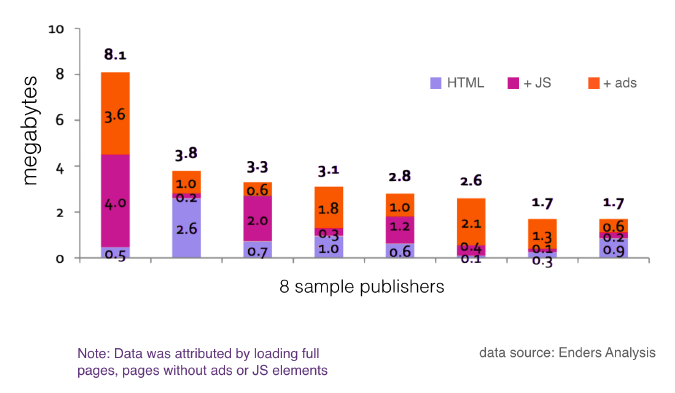
The common issue (and you can see it above) is the cost to download the ad costs more than the editorial material itself, putting mobile users at danger of using up their data for that month. The sum total of malvertisements, load times, battery life, and privacy loss has driven users to adopt ad-blocking software (something I’ve been using for a longtime for these exact reasons.) This is a growing problem for publishers, as it takes away ad revenue. Studies have also confirmed that users of ad blocking software prefer the simplicity of navigation of ad-free or nearly ad-free content. You will notice that many websites (especially news and entertainment focused) will not allow you to run ad block on their website and view the content. With Brave, their are no unwanted ads period and all the websites still function the same, if not better.
A study run by the New York Times found that removing ads save users more than five seconds of loading time over a typical cell connection. In 2017 alone, it is projected that 86.6 million Americans will use an ad blocker. Younger users are more likely to adapt ad blocking technology, making the longterm financial impact of this technology worse than it appears at first glance.
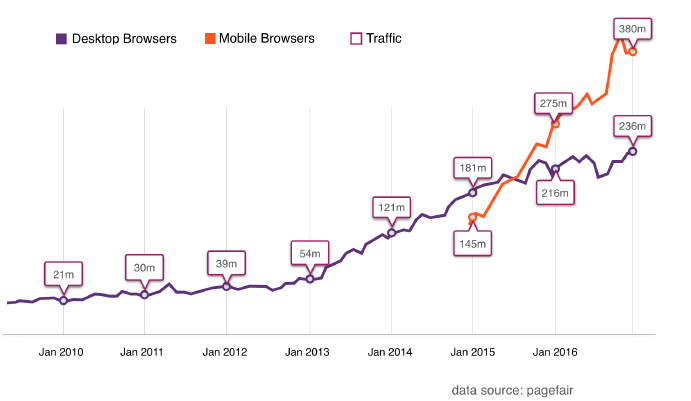
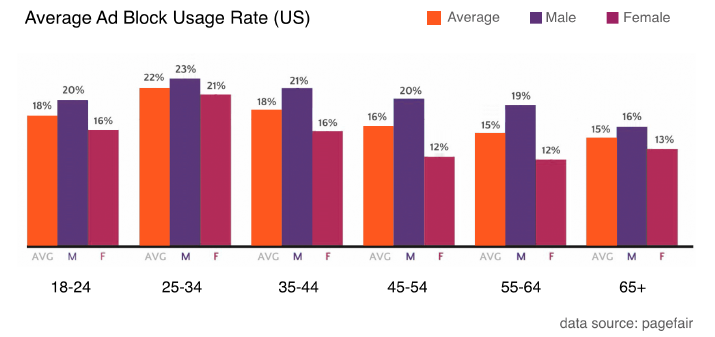
In the past few years, two names have taken more control of the digital ad space than anyone: Google & Facebook
Combined the two accounted for 73% of the online digital ad revenue and 99% of all growth from 2015 to 2016 in US total online ad budget. This would appear to be a good thing, but traffic driven through social media is of lower quality than direct links. Even with the advent of Google AMP, Facebook Instant Articles, and Apple News delivery channels producing initially promising results, over the long run they hurt the publishers as they divert traffic from the publishers website.
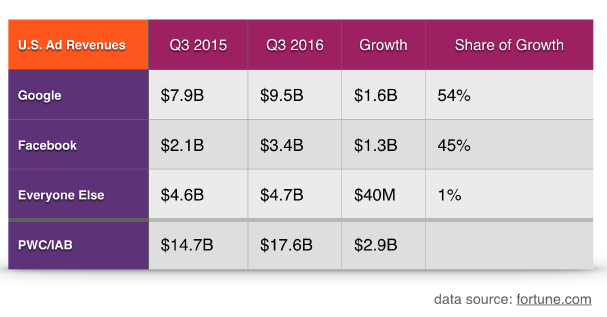
What does this all come down too? Publishing businesses with growing marketing budgets and static/shrinking ad revenue. When you put those two together you get more “click-bait” titles and less investigative journalism, long form articles, and foreign news bureaus. Isn’t it funny when you click on a link to a news article with some crazy title expecting some in depth article only to find three paragraphs and a feature photo.
As many know, we’ve seen traditional advertising lose it’s grip since the inception of the internet, only to be accelerated by the adoption of smart phones. Newspapers are some that have been hit the hardest. Thirty years ago you got your news from the newspaper, as TV news was really hitting it’s peak, though print still had a good grasp. Print advertising has now been on a steady decline in revenues since the turn of the 21st century.
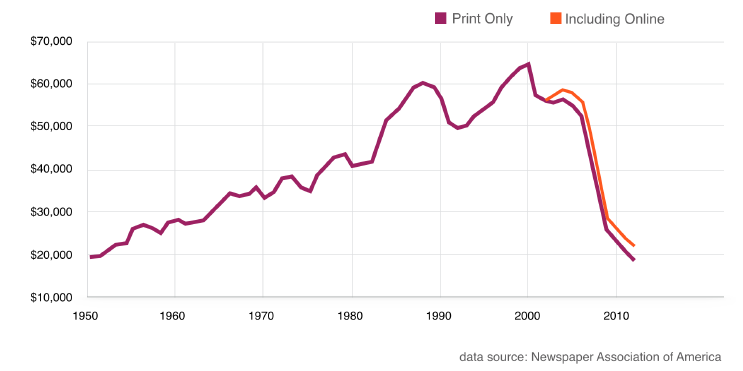
Who is Brendan Eich?

Both Brave and BAT our founded by Brendan Eich, the former co-founder of the Mozilla project and creator of JavaScript programming language. Eich was also apart of the Netscape team before leaving to co-found Mozilla in 1998.
His experience in the industry since the early days of the internet was one of the reasons there was a lot of hype following these projects. This is the reason the ICO sold out in 30 seconds. A good idea is only as good as the team behind it. If they can’t execute, than that idea will stay an idea and never come to fruition.
With Eich’s ability to bring in talent from numerous industries, it’s easy to see why many people believe in the long-term of the BAT and Brave browser project.
Overall, the future is looking bright for this cryptoasset project. BAT and Brave are bringing some much needed change and competition to the table, that may free us from the treacherous digital ad market we face today.
Disclaimer: The views expressed in this article are solely the author or analysts and do not represent the opinions of the author, or Inflluencive, on whether to to buy, sell or hold a particular cryptocurrency, cryptographic asset, stock, or any investment vehicle. Individuals should understand the risks of trading, investing, and consider consulting with a professional. Various factors can influence the opinion of the analyst as well as the cited material. Investors, traders, and others should conduct their own research independent of this article before purchasing any assets. Past performance is no guarantee of future price appreciation.
This is a Contributor Post. Opinions expressed here are opinions of the Contributor. Influencive does not endorse or review brands mentioned; does not and cannot investigate relationships with brands, products, and people mentioned and is up to the Contributor to disclose. Contributors, amongst other accounts and articles may be professional fee-based.

